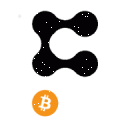
However, the new concept did not mean that voters could cast their ballots from the comfort of their homes. Voters using the blockchain method would need to go to a designated venue. Explaining how the blockchain voting worked, Sandeep Saxena, a former senior official of the election commission, said:
“It does not mean voting from home. After a voter’s identity is established by the system, a blockchain-enabled personalised e-ballot paper will be generated. When the vote is cast, the ballot will be securely encrypted and a blockchain hashtag generated. This hashtag notification will be sent to various stakeholders, in this case the candidates and political parties.”
Blockchain Voting on the Agenda
Blockchain-based voting seems to be gaining popularity among different countries. Elections via the paper ballot system could be riddled with inaccuracies and manipulation. Even electronic voting does not provide transparency and can be problematic, as proven in the Iowa caucus voting catastrophe.
As reported by CryptoPotato, the Iowa Democratic Party commissioned an app that would report the results of the caucuses. However, things went awry when the results were delayed, reportedly due to the app’s failure.











